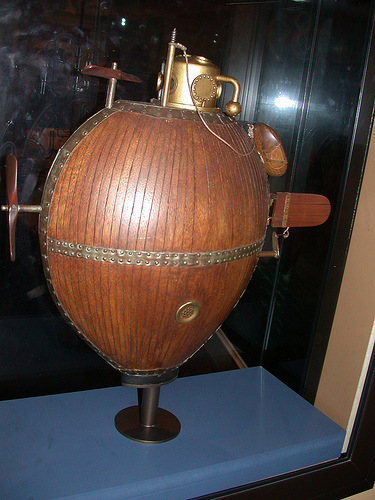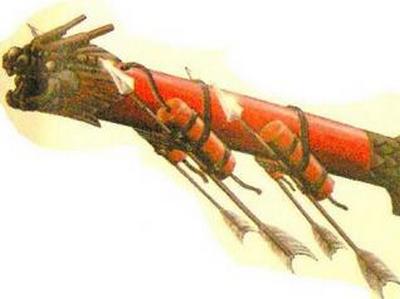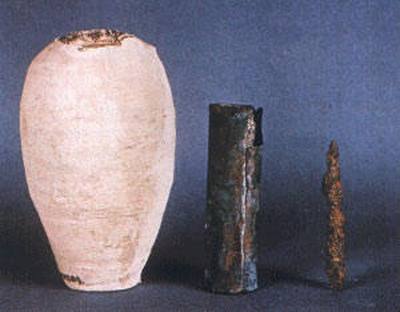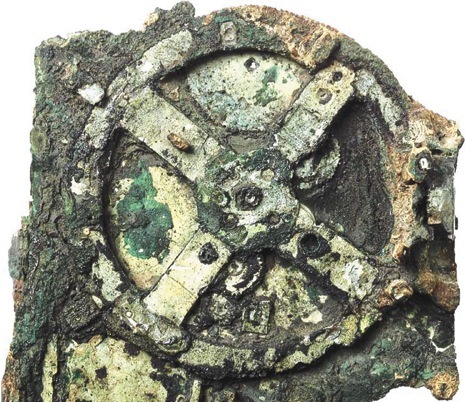As time moves forward our technology evolves. Cellular phones become smart phones become super phones. Screwdrivers become those screwdrivers with the different heads built in. And then there are some much more impressive technological innovations that can truly awe us with how far we have come.
1.
The Turtle
Despite being named after a creature we consider to be slow and dim witted, The Turtle is actually the first military submarine in recorded history. If you’re wondering why it’s called The Turtle, just look at the damn thing:

That, my friends, is an apt name.
Measuring in at ten feet long, six feet tall and three feet wide, this single person craft isn’t going to win anyone over through intimidation. In fact, there was only enough air on board for about thirty minutes. With a top speed of three miles per hour, your target better be pretty close or you need to be Barry Allen.
The craft was powered by hand cranked propellers and submerged by filling a bilge tank at the bottom. Then, when it needed to rise to the surface, hand pumps would empty the bilge tank. In an emergency situation the ship carried two-hundred pounds of lead to be released to increase buoyancy. Six pieces of glass at the top of the craft allowed for natural lighting.

The ship was designed to attack British ships with explosives. However, this never really panned out. The first attempt to do so, taking place in New York Harbor on September 6, 1776, failed when the Turtle was unable to attach the charge to the HMS Eagle. Shortly after an attempt to blow up a frigate in Manhattan was abandoned, the Turtle was sunk and the nightmare was over.
Though it failed to launch a successful attack in its lifetime, the Turtle’s (for the time) technologically sophisticated attempted attacks made the British suspicious of damn near anything floating at them that wasn’t flying a British Flag.
2.
The Fire Lance
Guns are the crux of modern warfare and boy, are we lucky for that. Before we had firearms you actually had to get close to the person you were about to kill, and who wants that?
The earliest ancestor of the fire arm (and all gun powder weapons) is the fire lance. The name is once again a very accurate description of the device: a bamboo tube was tied to a spear contained your choice of projectile and gunpowder. When fired, the tube released said projectiles along with a good amount of flame. While the spear was used in hand-to-hand combat the missile portion was used as the ultimate trump card.

Though the range of the blast was only a few feet, the fire lance quickly found itself independent of the spear and readily in the hands of peasants. As a cheap and disposable weapon it saw wide-spread use and was popularly stored on city walls for easy defense. Invaders trying to scale these walls were greeted by a fatal explosion. The weapon was also used to defend breached gates.
Curiously, one of the most popular projectiles used in the fire lance was poison darts. Just in case the explosion to the face didn’t work, you could kill your opponent slowly.
3.
The Tank
Sometimes shooting someone in the face with fire poison doesn’t send a strong enough message. For those times, one must rely on tanks.

One of the earliest tank designs was drawn up by none other than Leonardo da Vinci. When not busy painting suspiciously average looking ladies, da Vinci invented quite a few war machines.
His tank had a rather unique design: its turtle shell dome protected the men inside operating several cannons and covering all angles. The dome was covered with several slanted metal plates to help deflect enemy fire.

As for movement, the machine was to be powered by eight men constantly rotating cranks that controlled the wheels. At one point the idea of horses inside the dome moving the machine was considered but coordinating their movement would prove too challenging.
Designed as a means to intimidate and scatter enemy ranks, da Vinci’s tank was never feasible as designed and never saw combat. Historians claim that it was too heavy to move over uneven ground. Flaws in da Vinci’s drawings had also rendered the machine useless if it were to be built: the arrangement of gears as da Vinci drew them would have spun the wheels in opposite directions, resulting in some sort of Hannah-Barbera-esque mishap. It’s widely believed that da Vinci added this mistake intentionally as a security measure; should the design have ever been stolen the machine would have been a heavily armed paper weight and little else.
4.
Baghdad Battery
Discovered in 1936, the Baghdad Battery currently stands as the oldest discovered battery in the world. The batteries are comprised of small, five inch terracotta pots. The pot held a copper tube in the center holding an iron rod (though held separate with plugs). Vinegar, lemon juice, and grape juice could then be used to generate an electric current.

The origin of the battery remains a mystery, but even more so is how old the known batteries may be. Despite being exposed to extreme weather for a very long period of time, the batteries are in excellent shape. However, currently used methods of dating won’t work on the battery’s components.
The use of the battery is widely debated. Currently it’s thought that the battery could be used as a means of acupuncture, or electroplating. More interesting is the possibility of religious significance and use. If the batteries were linked in a certain way they could generate a field akin to an electric fence. With a primitive knowledge of electrical currents one could easily confuse this with, say, the wrath of an angry god.
5.
Antikythera Mechanism
One of the greatest mysteries of the ancient world is the Antikythera mechanism, one of the oldest recovered mechanical calculators in history.

Estimated to have been built between 100 and 150 B.C., the mechanism itself closely resembles that of a 19th century clock. It has over thirty gears whose teeth are formed through equilateral triangles. A crank (now missing from the device) could be turned to enter a date. That’s when the magic happened: the mechanism would calculate the position of the sun, moon, and several other celestial bodies in relation to Earth based on the geocentric model of the universe.
A dial on the front is made of two rings. One is marked with the days of the year while the other is marked with the Greek zodiac. It’s been theorized that the dial also had three hands: one to show the date, one to show the position of the moon and another for the sun.
The purpose of the device remains unknown. The obvious conclusion is that it was used for navigation, but some of the information it provides is useless to that end. It’s possible it could have been a very high-end calendar (Greeks loved automation and mechanics). If so, thank god that intricacy and elegance has been replaced by a $0.99 app.
Written by NN – Copyrighted © www.weirdworm.net Image Sources
Image sources:
- – The Turtle: http://static.howstuffworks.com/gif/nuclear-submarine-2.jpg http://farm3.static.flickr.com/2002/3779436091_d4905d8e24.jpg
- – The Fire Lance: http://en.kanzhongguo.com/thumbnail.php?file=101107/chinese_flame_thrower_710195449.jpg&size=article_medium
- – The Tank: http://tomwartonick.org/wordpress/wp-content/uploads//davinciTankimages.jpg http://www.ripten.com/wp-content/uploads/2010/10/tank_image1.jpg
- – Baghdad Battery: http://www.world-mysteries.com/sar_baghdad_battery11.jpg
- – Antikythera Mechanism: http://www.newyorker.com/images/2007/05/14/p465/070514_r16193_p465.jpg







